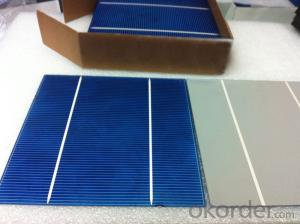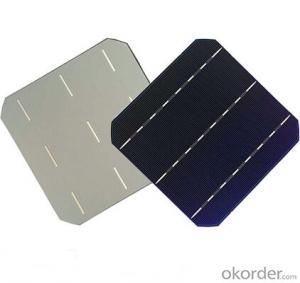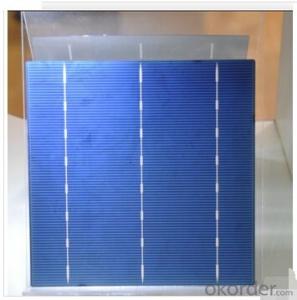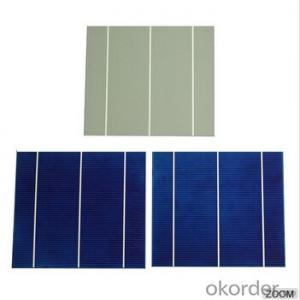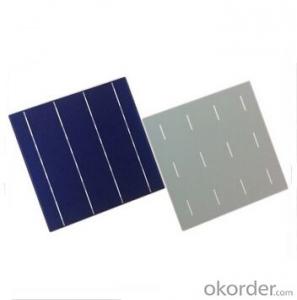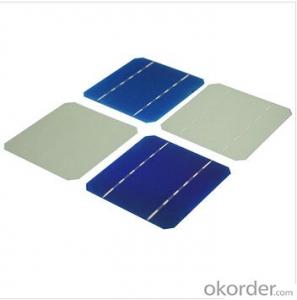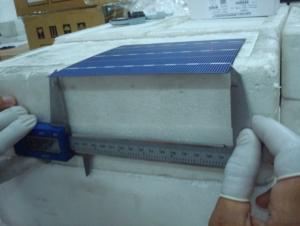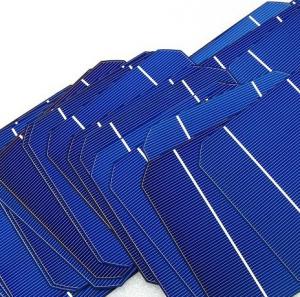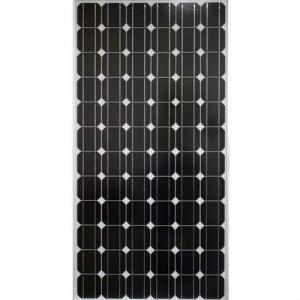Multilayer High Quality Solar Cells Poly-13% Effy
- Loading Port:
- China Main Port
- Payment Terms:
- TT OR LC
- Min Order Qty:
- -
- Supply Capability:
- -
OKorder Service Pledge
Quality Product, Order Online Tracking, Timely Delivery
OKorder Financial Service
Credit Rating, Credit Services, Credit Purchasing
You Might Also Like
Specifications
1. High efficiency and High power.
2. Long-term electrical stability.
3. Lowest price and Fastest delivery.
4. Good quality.
Advantage:
1. High efficiency and High power.
2. Long-term electrical stability.
3. Lowest price and Fastest delivery.
4. Good quality and good service.
5.Bulk supply
6. Good Warranty
7.Big Sale
8.Made in Taiwan/Germany etc for high quality
9.More than 35 years on the lifetime.
10 DHL/Fedex/UPS/TNT/EMS etc
11 No anti-dumping tax
- Q: What is the role of junction boxes in solar cell systems?
- Junction boxes in solar cell systems serve as important components that provide electrical connections and protect the solar panels. They house the electrical connections between multiple solar panels, ensuring a safe and efficient flow of electricity. Additionally, junction boxes act as a barrier, protecting the wiring and connections from environmental factors such as moisture and dust. Overall, junction boxes play a crucial role in the functionality and longevity of solar cell systems.
- Q: How do solar cells impact water resources?
- Solar cells have a positive impact on water resources as they do not require water for their operation, unlike traditional power plants that heavily rely on water for cooling purposes. This reduces the strain on water resources and helps in conserving them for other essential needs.
- Q: What is the role of power optimizers in solar cell systems?
- The role of power optimizers in solar cell systems is to maximize the energy output of each individual solar panel by ensuring that it operates at its maximum power point (MPP). Power optimizers achieve this by mitigating the effects of shading, module mismatch, and other factors that can decrease the overall performance of the system. They also enable panel-level monitoring and provide important data on the performance of each individual panel, allowing for more efficient maintenance and troubleshooting.
- Q: Can solar cells be used in space satellites?
- Yes, solar cells can be used in space satellites. In fact, solar cells are the primary source of power for most satellites in space. They convert sunlight into electricity, providing a reliable and renewable source of energy for various satellite operations.
- Q: What is the impact of partial shading on solar cell performance?
- Partial shading can significantly impact the performance of solar cells. When certain areas of a solar panel are shaded, it creates a mismatch in the amount of sunlight received across the panel. This uneven distribution of sunlight can lead to a decrease in overall power output, as shaded cells generate less electricity than unshaded cells. Additionally, partial shading can cause hotspots, where shaded cells become reverse biased and may become damaged due to excessive heat. Therefore, it is crucial to minimize shading on solar panels to maintain optimal performance and ensure maximum energy production.
- Q: Can solar panels be charged with light?
- A solar panel is a device that responds to light and converts light energy into electricity. There are many kinds of materials that can produce photovoltaic effect, such as: monocrystalline silicon, polycrystalline silicon,
- Q: What is the impact of leaf litter on solar cell performance?
- Leaf litter can have a negative impact on solar cell performance as it can block sunlight, reducing the amount of light reaching the cells and thus decreasing their efficiency. Additionally, leaf litter can also cause shading, leading to hotspots on the solar panels, which can further degrade their performance over time. Regular cleaning and maintenance of solar panels are necessary to mitigate the effects of leaf litter and optimize solar cell performance.
- Q: Can solar cells be used for powering electronics?
- Yes, solar cells can be used to power electronics. Solar cells convert sunlight into electricity, which can be used to power a wide range of electronic devices, from small gadgets like smartphones and calculators to larger appliances like laptops and even homes.
- Q: How much does a solar cell cost?
- It's not easy to answer the question in a simple way, but an example is the residential solar systems are typically sized from 3 to 8kW and end up costing between $15,000 and $40,000.
- Q: Can solar cells be used for powering drones?
- Yes, solar cells can be used for powering drones. Solar-powered drones utilize photovoltaic cells to convert sunlight into electricity, which can then be used to power the drone's motor and other systems. This renewable energy source allows for longer flight times and reduced reliance on traditional fuel sources.
Send your message to us
Multilayer High Quality Solar Cells Poly-13% Effy
- Loading Port:
- China Main Port
- Payment Terms:
- TT OR LC
- Min Order Qty:
- -
- Supply Capability:
- -
OKorder Service Pledge
Quality Product, Order Online Tracking, Timely Delivery
OKorder Financial Service
Credit Rating, Credit Services, Credit Purchasing
Similar products
Hot products
Hot Searches
Related keywords
